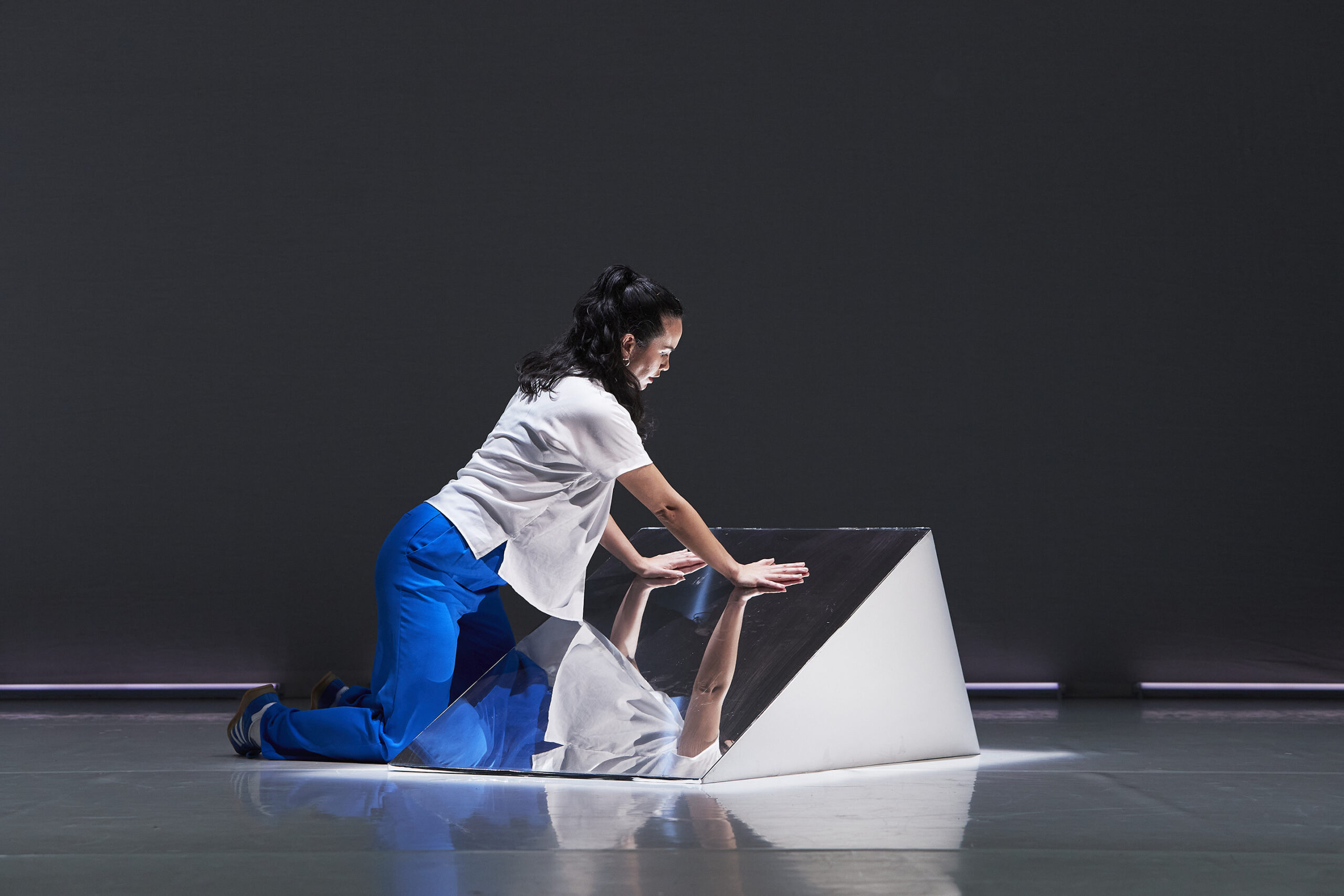on the future behind us
amilton de azevedo writes about Rinse, by Amrita Hepi (Bundjalung/Australia, Ngāpuhi/Aotearoa/New Zealand), presented in the 2024 Festival TransAmériques (FTA – Tiohtià:ké/Montreal). this text is part of a special coverage; the critic traveled to Canada at the invitation of the FTA.
Amrita Hepi enters the broad, white stage walking backwards. In the beginning, rewind. Rinse (Australia, 2022), repeat: the hybrid dance/lecture-performance/body-archive structure/research investigates through choreography and text our relation with how and when things started. In Hepi’s interview for the FTA website, the artist mentions that “often we conceptualize things at the moment when we have to differentiate them from something else”. As of her Bundjalung (Australia) and Ngāpuhi (Aotearoa/New Zealand) descent, Hepi looks at her own body as an archive of such influences but also of her Western dance formation.
Rinse is the realization of, if in the beginning was the word, who gets to choose the first sentence? And moreover, how do those initial paragraphs of the history of the world, of a country, of a population, of a family, of an artistic language, shapes and molds all of those yet to be written? These origin stories live within our imagination and are somewhat bonded to our bodies. Hepi’s spirally moves are the first of many attempts to shatter what is known and expected – rinse, repeat – at the same time that she acknowledges the influence and the almost impossibility to effectively create (and live) outside of such constructs.
- Read more: access this link for more theater critics written in english
- Read more: follow ruína acesa’s FTA special coverage
Her gestures go with the text, the text goes with her gestures, a dialogue is performed between movement and speech. Harmonical, dissonant, coming together, falling apart. Rinse has its moments of a fight between what is said and what is seen, as if the body-archive struggles with the body-discourse. Hepi metadances whilst performing. A sort of humorous homage to modern dance is presented and she narrates himself in real time – for the laughter of dance students, professionals and enthusiasts in the audience.
Considering the body as a living archive, the knowledge acquired and preserved within it – regarding movement and dance, institutional formation, context while growing up and ancestry are inhabiting the same melting pot – can see itself being confronted with other discourses; ideas versus memories, body-idea, body-memory. Hepi dances her story and the history of the world, but also dances against her story, against the history of the world. Rinse is also about recognizing that there never is only one narrative when glancing upon the past. Or the present. Or the future.
While Hepi shares origin myths, the recurring violence on such foundation narratives is brought to light. And when the colonial violence takes the center of the scene, Rinse makes a strong statement: there are a lot of ends that preceded beginnings. When the audience is invited to say “and ever” responding to her “forever” shouts, one can maybe hear “forever endeavor”. Rinse, repeat.
In the beginning, rewind. Walk backwards. Reject linearity, fight the idea of progress. There is so much future behind us and yet so much past to be lived upon. Hepi tries to push a theater wall with her hands, as she is striving to force the world’s structure with her body. Later, she will be dancing with the same wall, as these are hard to destroy.
Rinse‘s atmosphere of lightness and humor makes the audience captivated by Hepi speech and dance. When a participative moment takes place, it is almost like the public becomes children playing with their new toys. But then there is gunfire and war and an apotheotic chaos. Hepi attempts to shout back at screaming narratives that define first words, lines, paragraphs, pages, books, libraries. From the beginning, if there ever was one, up until this moment, so much has been done. For better or for worse, rinse, repeat.


Uma crítica que dança o texto